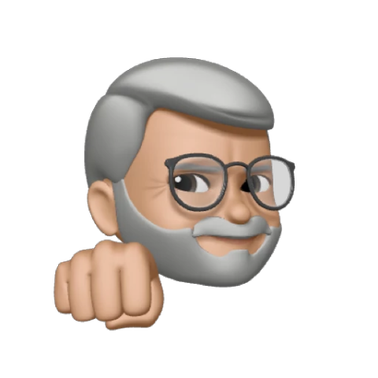Book Review: Delivering Happiness by Tony Hsieh
Culture must be one of the most overused but least understood terms in the business world. Today it has turned into a buzzword without which you cannot prepare a press release or make an announcement. What it refers to in the business context and what it does for a particular company rarely get more attention than a few sentences in a mission statement, though.
However, this does not mean that there aren’t companies that live and die by their culture. Despite being a rare sight, such companies are built around a few core values that define their raison d'être, rely on these core values to develop sustainable competitive advantage and try to beat their competition in the long game. Some companies put so much value on culture that they go to extreme lengths to promote their corporate culture, just like Zappos did by publishing the Culture Book explaining what culture means to them.
Starting out as your run-of-the-mill online shoe retailer, the Las Vegas-based Zappos was acquired less than a decade later by Amazon in 2009 for more than $1 billion and it happens to be the subject of the book we review this month: Delivering Happiness. The book narrates the Zappos story through the eyes of Tony Hsieh (pronounced as ‘Shay’), the Harvard-graduate entrepreneur who led the company from 1999 to 2020 after having sold his former company, LinkExchange, to Microsoft for $265 million when he was just 25 in 1998.
A man looking for a tribe of his own
Tony comes across as a man who dislikes formalities, and his style throughout the book reflects that: Casual, fun, readable with a “substance over form“ approach. He is an eccentric man who values sincerity in relationships and never settles for anything less than genuine experiences. He is almost childishly transparent in what he wants: He doesn’t like working a lot or getting bored. It looks like there is nothing he can’t get bored with within a few weeks. He develops an interest in something, devours it, and then moves on because he no longer sees any point in doing it further. However, when he is engaged, he is locked in. Tony is one of those people who jump in with two feet when he is engaged. He takes an interest in rave parties, but he won’t be content with just dancing, so he will rent a warehouse to organize the best rave parties in town. He takes an interest in poker, but just playing won’t be enough for him; he studies it religiously as if it were a course he took at Harvard.
Tony does not want to be around people he does not like. He wants to become a part of a bigger whole, a tribe, in his own words. Tony wants to be happy. Actually he is obsessed with the concept of happiness. He wants to be happy so much so that understanding, experiencing and delivering happiness becomes his life goal. This is where awkward and silly details in the book start to come together and the reader gradually realizes that Tony the fun-seeking guy and Tony the millionaire entrepreneur kind of align: Tony’s story is a struggle to be himself while chasing success in business.
Turning corporate culture into a business strategy
Delivering Happiness is a book about culture. It reveals how culture, not some new technology or an ingenious idea, can be the source of lasting competitive advantage and the foundation upon which a billion-dollar company can be built. Tony draws parallels between his character and his company’s culture throughout the book. When he draws parallels between what makes someone happy (pleasure, passion, purpose) and a company great (profit, passion, purpose), it occurs to you that this man did business just like he lived his life.
Tony recounts that his happiest moments in life were when he felt like he was part of a bigger whole—that was the reason he was obsessed with rave parties for a while in his life where it would feel like taking part in a tribal ritual. Getting to know new people and increasing the number and depth of his relationships are principles he discovered to be extremely rewarding.
One cannot help but notice that Tony Hsieh pursued similar feelings in business. He left $40 million on the table by quitting Microsoft because he was not happy sitting around doing nothing after they had bought LinkExchange for $265 million. Money is a non-issue; Tony is at his best when he is part of a group perfectly aligned behind a single purpose. The core group of guys at Zappos turning his loft into a dorm, or majority of his employees moving to Las Vegas with him when he decides to move the Zappos headquarters from San Francisco to the City of Lights… Moments like those are when the culture he has built crystallizes.
Customer service as the engine of growth
While finding, understanding and giving happiness is at the center of his personal life, customer service—delivering happiness to customers—stands at the center of the company culture Tony and his partners instilled in their employees. Instead of investing in marketing, Zappos chose to invest in customer service and the personnel that would provide that service, which eventually paid off.
The obsession with customer service is what led Zappos to resort to some counterintuitive practices like making phone calls a central part of the marketing effort. However, such tricks worked because Zappos had positioned itself as a high-touch company that valued personal contact.
Another of such counterintuitive practices was giving vendors full visibility into inventory levels, sales, and profitability figures of Zappos. This aimed at leveraging the vendors’ expertise, treating them in a fair manner and creating a collaborative environment as opposed to a hostile one, and fit perfectly with one of the core values of Zappos: Build Open and Honest Relationships with Communication.
But it wasn’t all smooth sailing for Zappos. The company had to weather storms during its first few years and was on the brink of going out of business a couple of times. Still, it managed to remain loyal to its core values to ensure long-term success while chasing short term goals to make its runway a bit longer.
Final thoughts
Can anyone else borrow Tony’s playbook? How likely is it for an entrepreneur to have such a good fit between his character and the company he helped build? These are difficult questions to answer. However, focusing on things you like doing often and turning them into a strength for your company, devising a game plan to capitalize on that strength, building a culture around it, and supporting it with core values your employees can embrace would be a good start.
People like Tony Hsieh are not immune to failure; they do fail. What they excel in is building resilience through culture—building a structure that can keep functioning in the face of adversity and failure. It is the kind of spirit that gets a company back on its feet to fight back every time its existence is on the line.
Tony Hsieh is no longer with us, unfortunately, but his body of work and Delivering Happiness keep reminding us about one of the golden rules of doing business: A good business idea might suffice to get you in the game. However, it is the culture that will make you play that game out.




 Please
fill out this field
Please
fill out this field









